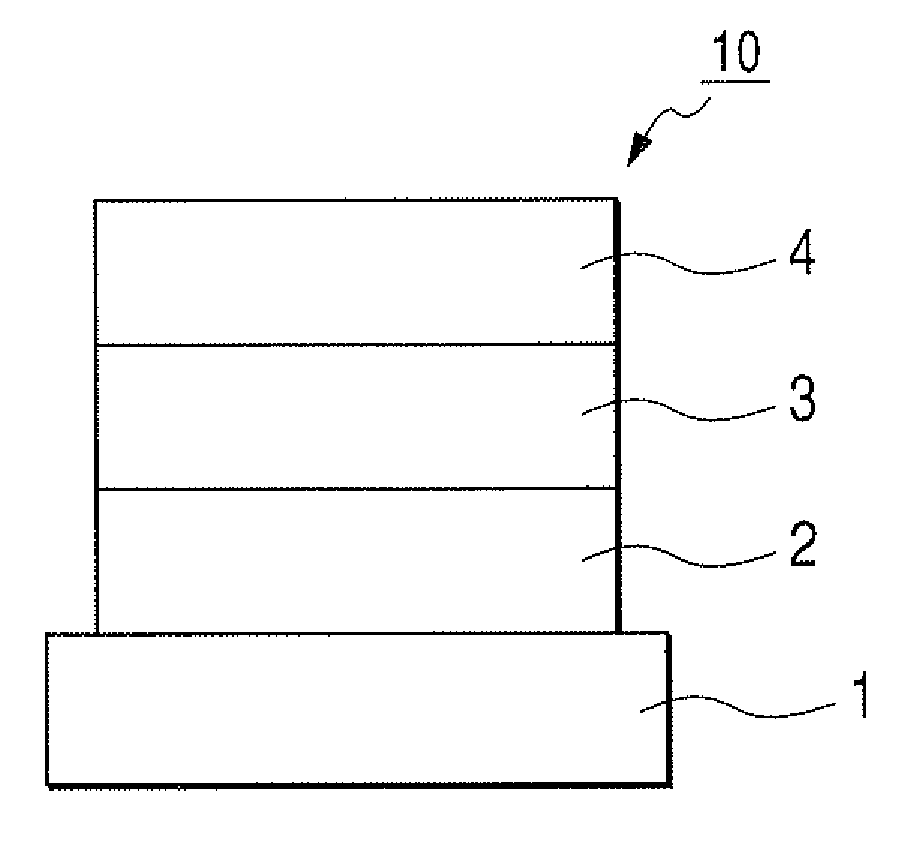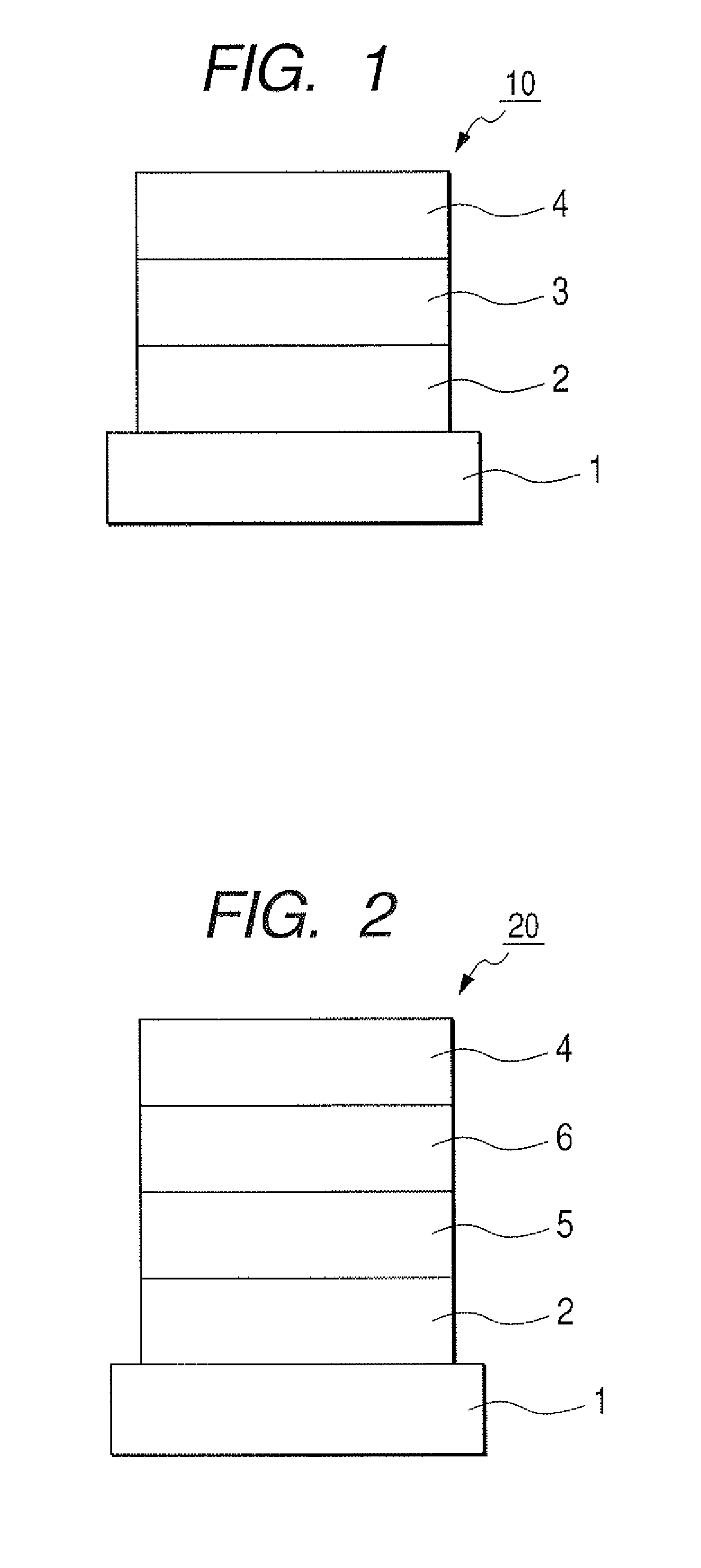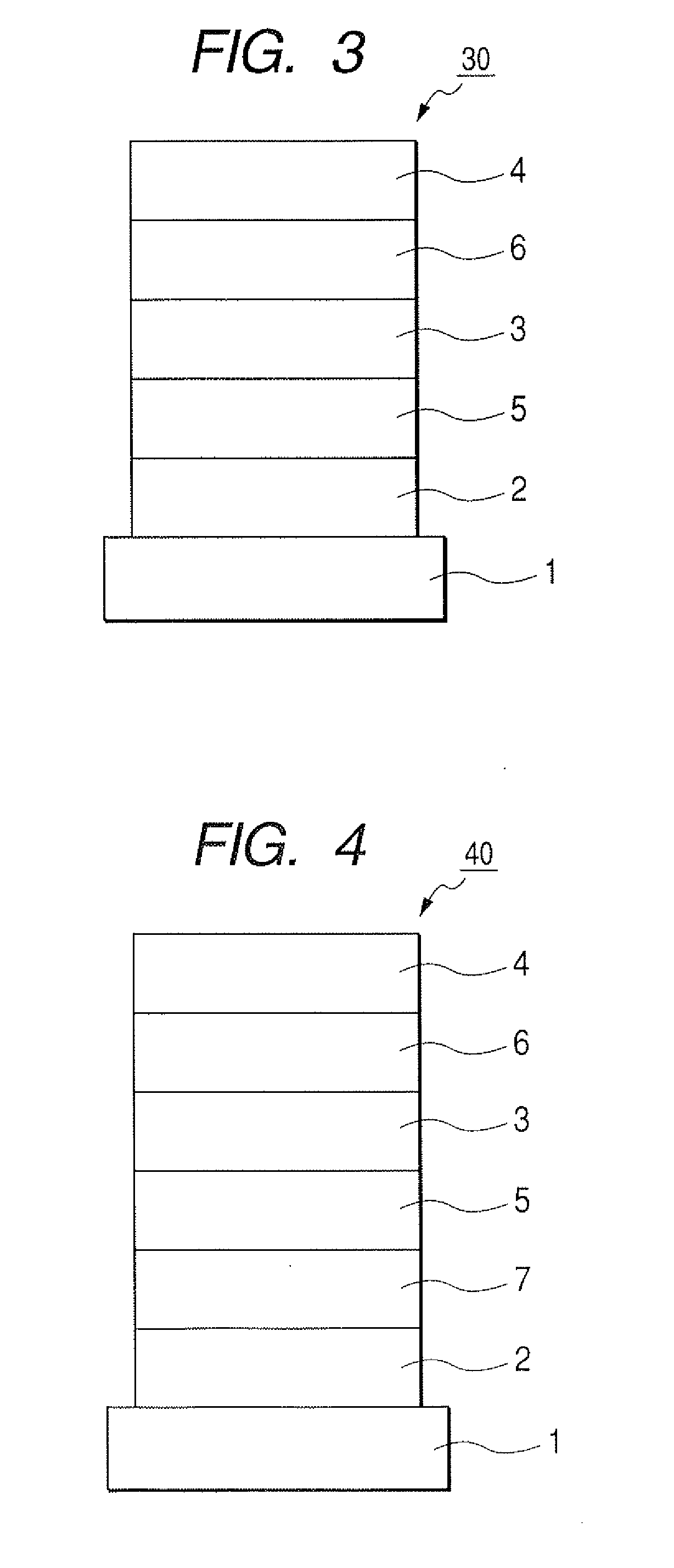Carbazole derivative and organic light emitting device using the same
- Summary
- Abstract
- Description
- Claims
- Application Information
AI Technical Summary
Benefits of technology
Problems solved by technology
Method used
Image
Examples
example 1
Synthesis of Exemplified Compound No. A-25
[0084]
[0085]Compounds described below were each charged into a 300-ml flask.
Compound 1: 3.25 g (10 mmol)
Compound 2: 7.69 g (20 mmol)
Toluene: 50 ml
Ethanol: 25 ml
[0086]2M sodium carbonate solution: 50 ml
Tetrakis(triphenylphosphine)palladium (0): 1 g
[0087]After the charge, agitation was performed at 80° C. for 8 hours under nitrogen flow. After the reaction, the reaction solution was extracted with toluene, and then the organic layer was washed with water. The organic layer was dried with magnesium sulfate and concentrated under reduced pressure. After the purification by silica gel chromatography (eluent: hexane / chloroform), recrystallization was performed with toluene / ethanol to obtain 5.3 g of Compound 3 (yield: 78.0%).
[0088]Next, compounds described below were each charged into a 200-ml flask.
Compound 3: 1.00 g (1.47 mmol)
Iodobenzene: 0.36 g (1.78 mmol)
Ortho-xylene: 70 ml
[0089]Tritertiary butylphosphine: 37 mg
Palladium acetate: 7.6 mg
Sodium...
example 2
Synthesis of Exemplified Compound No. A-35
[0096]
[0097]1.00 g (1.47 mmol) of Compound 3, 36 mg of sodium hydroxide, 50 ml of dimethylformamide were each charged into a 100-ml flask, and agitation was performed for 1 hour under nitrogen flow. 0.3 g of methyliodide was dropped thereinto, and the agitation was further performed at room temperature for 5 hours. After the completion of the reaction, the reaction solution was added with methanol and dried and concentrated under reduced pressure. The reaction solution was added with water and extracted with toluene, and dried with magnesium sulfate and concentrated under reduced pressure. After the purification by silica gel chromatography (eluent: toluene), recrystallization was performed with toluene / ethanol. The obtained crystal was dried under vacuum and subjected to sublimation purification to obtain 980 mg of Exemplified Compound No. A-35 (yield: 96.1%).
[0098]Matrix-assisted laser desorption / ionization time-of-flight mass spectrometry...
example 3
Production of Organic Light Emitting Device
[0101]Indium tin oxide (ITO) was formed by a sputtering method into a film having a thickness of 120 nm to serve as the anode on a glass substrate. The substrate on which ITO film was formed was subjected to ultrasonic cleaning with acetone and isopropyl alcohol (IPA) sequentially. Then, the substrate was subjected to boiling cleaning with IPA, followed by UV / ozone cleaning. Thus treated glass substrate was used as a transparent conductive supporting substrate.
[0102]Chloroform solution of Compound 4 described below was applied onto the transparent conductive supporting substrate by a spin coating method to form a film into a film thickness of 20 nm, thereby obtaining a hole transporting layer. Next, the other organic layer and the electrode layer were successively formed by vacuum vapor deposition using resistive heating within a vacuum chamber of 10−5 Pa. Specifically, first, the light emitting layer was formed into a film thickness of 20 ...
PUM
| Property | Measurement | Unit |
|---|---|---|
| Electric potential / voltage | aaaaa | aaaaa |
| Durability | aaaaa | aaaaa |
| Luminance | aaaaa | aaaaa |
Abstract
Description
Claims
Application Information
 Login to View More
Login to View More - R&D
- Intellectual Property
- Life Sciences
- Materials
- Tech Scout
- Unparalleled Data Quality
- Higher Quality Content
- 60% Fewer Hallucinations
Browse by: Latest US Patents, China's latest patents, Technical Efficacy Thesaurus, Application Domain, Technology Topic, Popular Technical Reports.
© 2025 PatSnap. All rights reserved.Legal|Privacy policy|Modern Slavery Act Transparency Statement|Sitemap|About US| Contact US: help@patsnap.com



